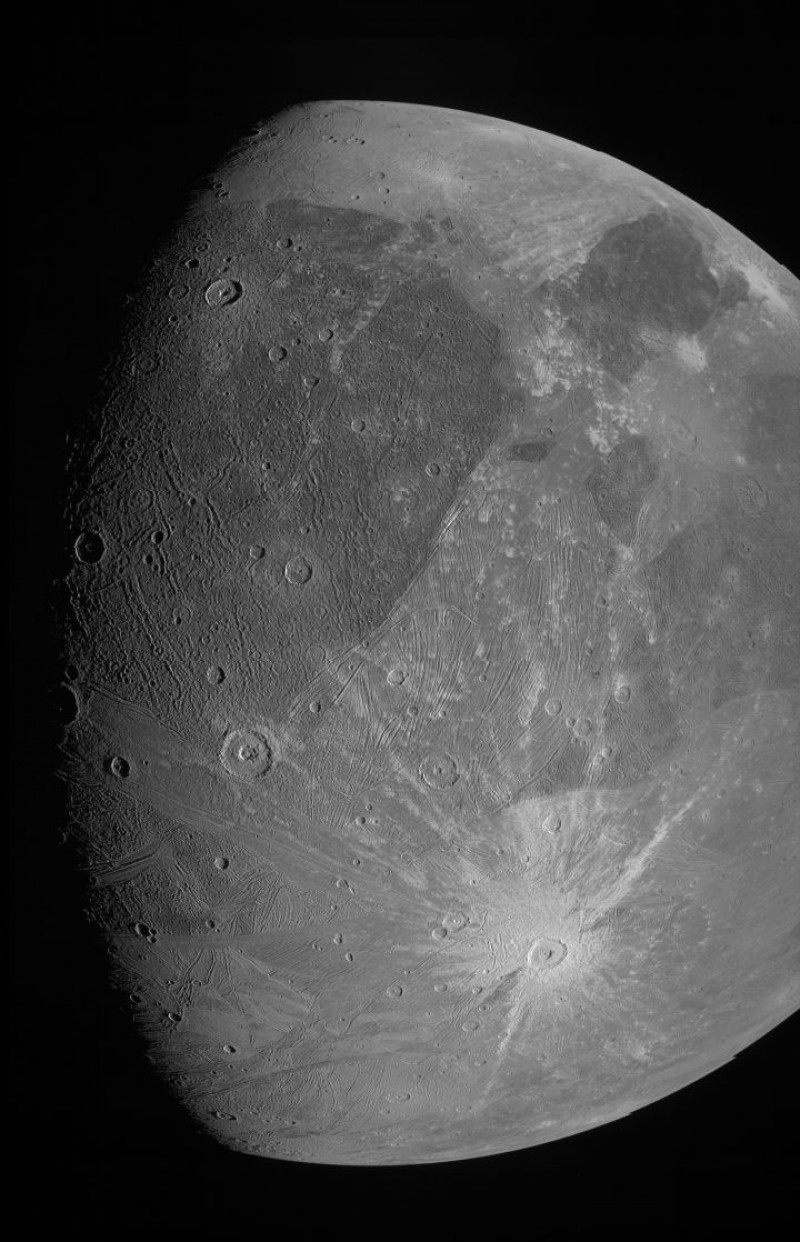NASA’s Juno spacecraft has provided the first images in the past two decades, taken from a short distance, of Jupiter’s largest natural satellite. Juno passed Ganymede, the icy satellite of Jupiter, at a distance of 1,038 kilometers on Monday.
The last time a spacecraft came close was in 2000, when NASA’s Galileo passed the largest moon in our solar system.
Posted by NASA On Tuesday, the two images Juno took, in which Ganymede craters and the long and narrow formations can be seen, may relate to plate tectonics. In one of the images, you can see the farthest part of the natural satellite, facing the sun.
“No spacecraft has come close to this latest generation of supermoons,” said Scott Bolton, the Juno project principal investigator at the Southwest Research Institute in San Antonio.
“We’ll take the time to draw scientific conclusions, but until then we can simply marvel at this celestial miracle: the only moon in our solar system is bigger than Mercury,” Bolton added.
Ganymede is one of the 79 known moons around Jupiter, the gas giant.
It was the Italian astronomer Galileo Galilei who discovered Ganymede in 1610, along with the three largest natural satellites of Jupiter.
The unmanned Juno spacecraft was launched ten years ago and has been orbiting Jupiter for five years.
Over the next few days, Juno will send back several images taken as it passed through Ganymede, and its encounter with Jupiter could provide information about its composition, ionosphere, magnetosphere, and ice sheet, according to EFE observations. At the same time, scientists estimate that they will be able to obtain data on radiation levels, which can be used in future missions in the Jovian system.
Juno, the size of a basketball court, is the first designed to operate in the center of Jupiter’s radiation belt and the first to reach a distance of 2,575 kilometers from its upper cloud layer.
Read also: Photo gallery How are the bright clouds on Mars Images published by Curiosity Rover
Editor: AA

“Internet trailblazer. Travelaholic. Passionate social media evangelist. Tv advocate.”







More Stories
Long tenures for general managers
NASA's Psyche space probe communicates via laser with Earth from a distance of 226 million kilometers
A possible explanation for one of cosmology's greatest mysteries has arrived